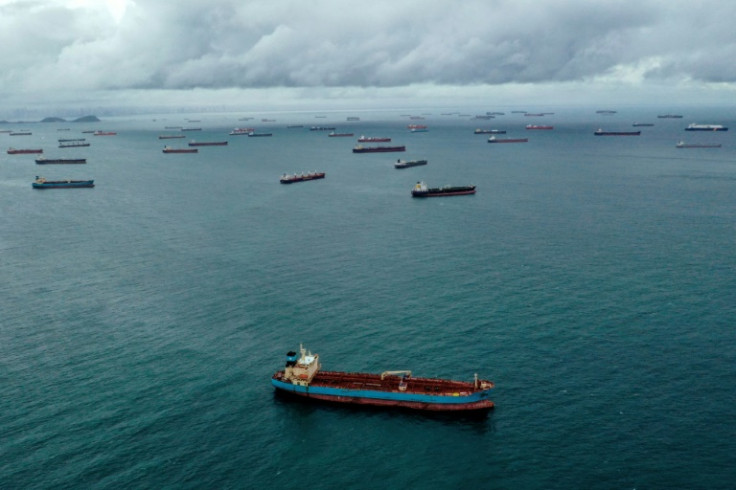Red Sea, Panama Canal Send Container Freight Costs Soaring – What It Means For Global Economy And Wall Street

The escalating crisis in the Red Sea region and the Panama Canal drought create significant international shipping and logistics challenges.
For instance, the Panama Canal drought causes severe shipping delays from Asia to the U.S. East Coast, particularly for heavy goods. Carriers are rerouting from trans-Pacific to trans-Atlantic via the Suez Canal, intensified by Red Sea disruptions, with alternate routes increasing transit times by 20-30%.
Like 2020's supply chain disruptions, these delays may lead to port and warehouse overloads, reviving fears of renewed supply chain bottlenecks. They could lead to container shortages, soaring shipping rates and cost-push inflation.
The Containerized Freight Index has almost doubled since Dec. 1, from 976 to 1,896 points; it increased 446.46 points or 25.37% since the beginning of 2024 alone. Historically, the Containerized Freight Index reached an all-time high of 5109.60 points in January 2022.
Rising freight rates could have far-reaching consequences for both Main Street and Wall Street, including the spoiling of the efforts of central banks to bring inflation under control and eventually cut interest rates — a game-changing move for Main Street and Wall Street.
To assess the seriousness of the situation, International Business Times reached out to Freight Right Global Logistics founder and CEO Robert Khachatryan for insights. Here are excerpts from the interview:
How serious is the problem?
The situation is quite severe. The Panama Canal drought has led to significant rerouting of shipping vessels, with a drastic shift from Trans-Pacific to Trans-Atlantic routes. This rerouting, mainly through the Suez Canal and the Cape of Good Hope, has caused substantial delays in transit times (20-30% increase) and effectively halved the container shipping capacity. Such disruptions are severely impacting supply chains globally.
Which sectors/Industries are affected?
Primarily, the retail, apparel, furniture, shoes and consumer electronics sectors sourcing from Asia are affected. Heavier goods are disproportionately impacted due to weight restrictions caused by the Panama Canal drought. Any industry relying on timely deliveries from Asia to the U.S. East Coast faces challenges.
How are they affected?
Extended transit times lead to longer waiting periods for goods, disrupting inventory management and sales cycles. The increased operational costs for longer voyages are likely to affect the pricing of goods, contributing to inflation. Additionally, the redirection of cargo to the U.S. West Coast is putting strain on ports and logistics infrastructure there, reminiscent of the disruptions seen in 2020.
Is the situation getting better or worse?
In the short term, the situation may worsen as the Suez/Red Sea disruption continues. However, the shipping industry has some mitigating factors: carriers have excess capacity due to previous slow steaming and anchoring strategies, and new vessels are expected to be delivered in 2024. The industry's recent experience with disruptions and the government's better understanding of the situation may also help manage the crisis more effectively.
What should investors do?
Investors should monitor the situation closely and consider the potential impact on businesses reliant on Asian imports. Diversifying investments to include companies with more localized supply chains or those less affected by shipping disruptions could be prudent. Additionally, investing in logistics and shipping companies adapting well to these challenges could be beneficial, as they stand to gain from increased demand for their services.
© Copyright IBTimes 2025. All rights reserved.






















